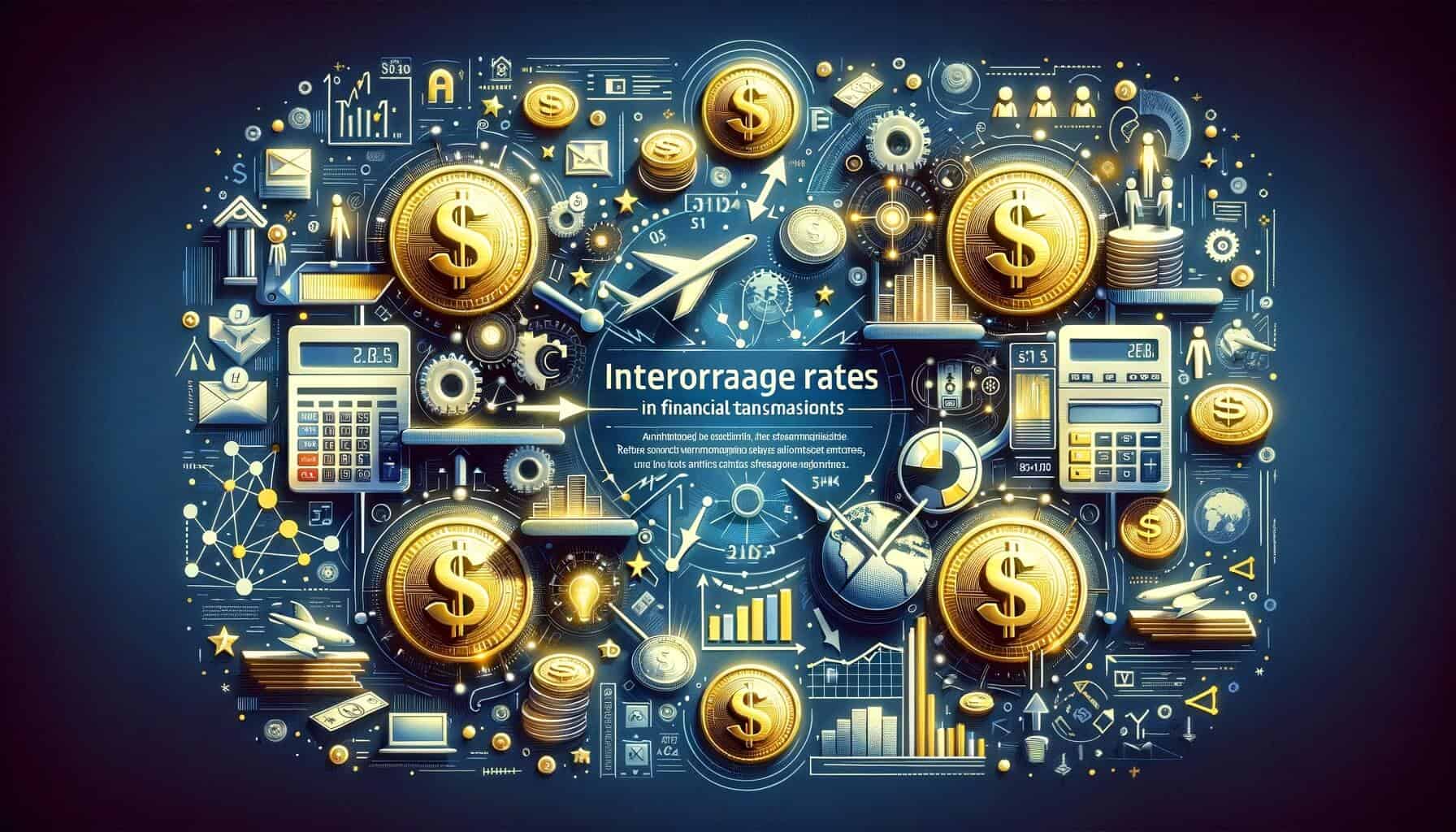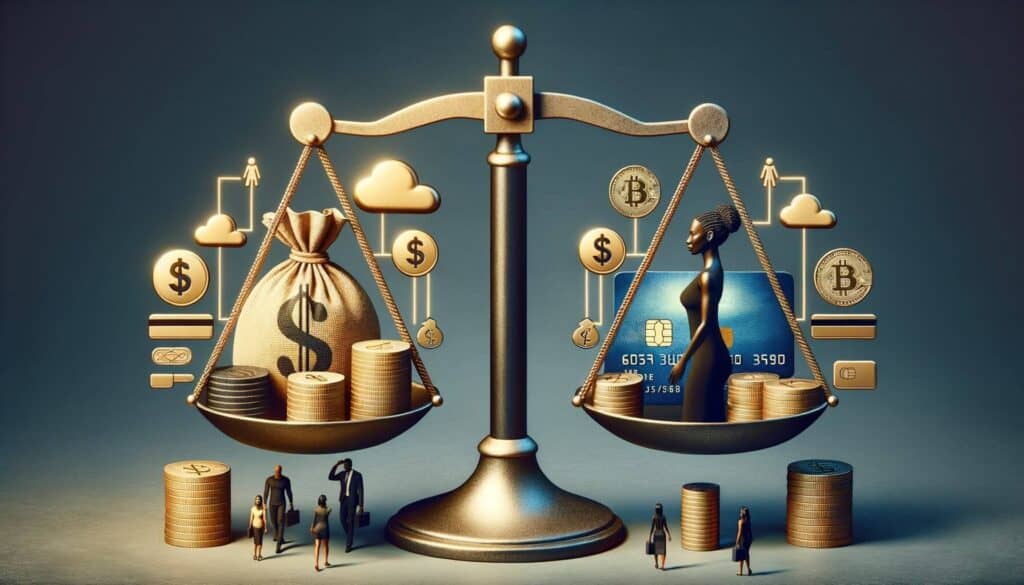
By Barbara Thomas March 11, 2025
Interchange rates are a crucial aspect of the payment processing industry, yet many merchants and consumers are unaware of their existence and significance. In this comprehensive article, we will delve into the definition of interchange rates, their role in the payment ecosystem, and how they impact both merchants and consumers.
We will also explore the factors that influence interchange-rates, the different types of interchange rates, and strategies for merchants to optimize their interchange fees. Additionally, we will address common misconceptions about interchange-rates and provide answers to frequently asked questions.
Understanding the Basics: What are Interchange Rates?
Interchange rates refer to the fees that are charged by card associations, such as Visa and Mastercard, to merchants for accepting credit and debit card payments. These rates are set by the card associations and are non-negotiable for individual merchants. The interchange fees are a percentage of the transaction value and are typically paid by the acquiring bank, which is the bank that processes the payment on behalf of the merchant.
The purpose of interchange-rates is to cover the costs associated with processing card transactions, including fraud prevention, network infrastructure, and customer support. These fees also serve as a revenue stream for the card associations, allowing them to invest in innovation and maintain the security and reliability of the payment system.
Factors Influencing Interchange Rates

Several factors influence interchange-rates, including the type of card used, the type of transaction, and the risk associated with the transaction. Cards can be categorized into different tiers based on their features and benefits, such as rewards programs or premium services. Higher-tier cards typically have higher interchange rates due to the added value they provide to cardholders.
The type of transaction also plays a role in determining interchange-rates. For example, card-present transactions, where the card is physically present at the point of sale, generally have lower interchange rates compared to card-not-present transactions, such as online or phone orders. This is because card-present transactions are considered to be less risky and less prone to fraud.
The risk associated with a transaction is another important factor in determining interchange rates. Transactions that are deemed to be higher risk, such as those involving international payments or certain industries with a higher likelihood of chargebacks, may attract higher interchange-rates to compensate for the increased risk.
The Role of Card Associations in Determining Interchange Rates

Card associations, such as Visa and Mastercard, play a crucial role in determining interchange rates. These associations act as intermediaries between the issuing banks, which provide credit or debit cards to consumers, and the acquiring banks, which process the payments on behalf of merchants.
The card associations set the interchange-rates based on various factors, including the costs associated with processing transactions, the level of risk involved, and the competitive landscape of the payment industry. These rates are periodically reviewed and adjusted to ensure they remain fair and reflective of the current market conditions.
It is important to note that interchange rates are standardized across all merchants within a specific country or region. This ensures a level playing field for all businesses and prevents unfair pricing practices. However, interchange-rates may vary between countries due to differences in market dynamics and regulatory frameworks.
Different Types of Interchange Rates

There are several types of interchange rates that merchants need to be aware of. The most common types include:
1. Consumer Card Interchange Rates: These rates apply to transactions made with consumer credit and debit cards. They are further categorized based on the type of card, such as basic, rewards, or premium cards.
2. Commercial Card Interchange Rates: These rates apply to transactions made with commercial credit and debit cards, which are typically issued to businesses. Commercial cards often have higher interchange-rates due to the additional features and benefits they offer.
3. International Interchange Rates: These rates apply to transactions involving international payments. They are typically higher than domestic interchange-rates to account for the increased risk and complexity associated with cross-border transactions.
4. Card-Not-Present Interchange Rates: These rates apply to transactions where the card is not physically present at the point of sale, such as online or phone orders. Card-not-present transactions generally have higher interchange-rates due to the increased risk of fraud.
How Interchange Rates Impact Merchants and Consumers

Interchange rates have a direct impact on both merchants and consumers. For merchants, interchange fees represent a significant portion of their payment processing costs. These fees can vary depending on the type of card and transaction, and they can significantly impact a merchant’s profitability, especially for businesses with low-profit margins.
Higher interchange-rates can also discourage merchants from accepting certain types of cards or engaging in certain types of transactions. For example, if the interchange rate for premium cards is too high, a merchant may choose not to accept such cards, potentially alienating customers who prefer to use premium cards for their purchases.
On the other hand, interchange-rates can also benefit merchants by providing access to a wide range of payment options for their customers. By accepting credit and debit cards, merchants can attract more customers and increase sales. Additionally, the convenience and security offered by card payments can enhance the overall customer experience and build trust with consumers.
For consumers, interchange rates indirectly impact the prices they pay for goods and services. Merchants often pass on the cost of interchange fees to consumers through higher prices or surcharges. This means that consumers may end up paying more for their purchases when using credit or debit cards compared to cash payments.
However, it is important to note that interchange fees also enable the card associations to invest in technology and security measures that protect consumers from fraud and ensure the smooth functioning of the payment system. Without interchange fees, the costs associated with processing card transactions would need to be borne by either the merchants or the consumers directly.
Interchange Optimization Strategies for Merchants
Given the impact of interchange rates on merchants’ bottom line, it is essential for businesses to implement strategies to optimize their interchange fees. Here are some effective strategies that merchants can consider:
1. Review Card Acceptance Policies: Merchants should carefully evaluate their card acceptance policies and consider accepting a wide range of card types. By accepting more cards, merchants can attract a larger customer base and potentially benefit from lower interchange-rates for certain card types.
2. Implement Fraud Prevention Measures: Merchants should invest in robust fraud prevention measures to minimize the risk associated with card transactions. By reducing the likelihood of chargebacks and fraudulent activities, merchants can potentially qualify for lower interchange rates.
3. Optimize Payment Processing Systems: Merchants should regularly review their payment processing systems and explore options for optimizing efficiency and reducing costs. This may involve leveraging technology solutions, such as payment gateways or point-of-sale systems, that offer competitive interchange rates and streamline the payment process.
4. Negotiate with Acquiring Banks: While interchange-rates are non-negotiable with card associations, merchants can negotiate with acquiring banks to secure better pricing for payment processing services. By comparing offers from different acquiring banks and leveraging their bargaining power, merchants may be able to obtain more favorable interchange-rates.
Common Misconceptions about Interchange Rates
There are several common misconceptions about interchange rates that need to be addressed. Here are some of the most prevalent misconceptions:
1. Interchange Rates are Set by Banks: Contrary to popular belief, interchange-rates are not set by banks. They are determined by card associations, such as Visa and Mastercard, and are non-negotiable for individual merchants.
2. Interchange Rates are Hidden Fees: Interchange-rates are not hidden fees imposed by card associations or banks. They are transparent fees that are disclosed in the merchant agreement and are an integral part of the payment processing ecosystem.
3. Interchange Rates are Arbitrary: Interchange-rates are not arbitrary or randomly assigned. They are based on a complex set of factors, including the costs associated with processing transactions, the level of risk involved, and the competitive landscape of the payment industry.
4. Interchange Rates are the Same for All Merchants: While interchange-rates are standardized within a specific country or region, they can vary between countries and industries. Different merchants may also qualify for different interchange-rates based on their transaction volume, average ticket size, and other factors.
Frequently Asked Questions
Q1. Why do interchange rates vary between card types?
Answer: Interchange rates vary between card types to reflect the different features and benefits offered to cardholders. Higher-tier cards typically have higher interchange rates due to the added value they provide.
Q2. Can merchants negotiate interchange rates?
Answer: Merchants cannot negotiate interchange rates directly with card associations. However, they can negotiate with acquiring banks to secure better pricing for payment processing services.
Q3. Do interchange rates change over time?
Answer: Interchange rates are periodically reviewed and adjusted by card associations to ensure they remain fair and reflective of the current market conditions.
Q4. How can merchants reduce their interchange fees?
Answer: Merchants can reduce their interchange fees by implementing strategies such as accepting a wide range of card types, implementing fraud prevention measures, optimizing payment processing systems, and negotiating with acquiring banks.
Conclusion
Interchange rates are a fundamental aspect of the payment processing industry, yet they are often misunderstood or overlooked by merchants and consumers. Understanding the basics of interchange rates, the factors that influence them, and their impact on businesses and consumers is crucial for navigating the payment ecosystem effectively.
By optimizing their interchange fees through strategies such as accepting a wide range of card types, implementing fraud prevention measures, and negotiating with acquiring banks, merchants can minimize their payment processing costs and enhance their profitability. It is also important for both merchants and consumers to recognize the value that interchange fees bring to the payment system, including the convenience, security, and innovation that card payments offer.
As the payment industry continues to evolve, it is essential for all stakeholders to stay informed about interchange rates and their implications. By fostering a deeper understanding of interchange rates, merchants and consumers can make informed decisions and contribute to a more efficient and inclusive payment ecosystem.